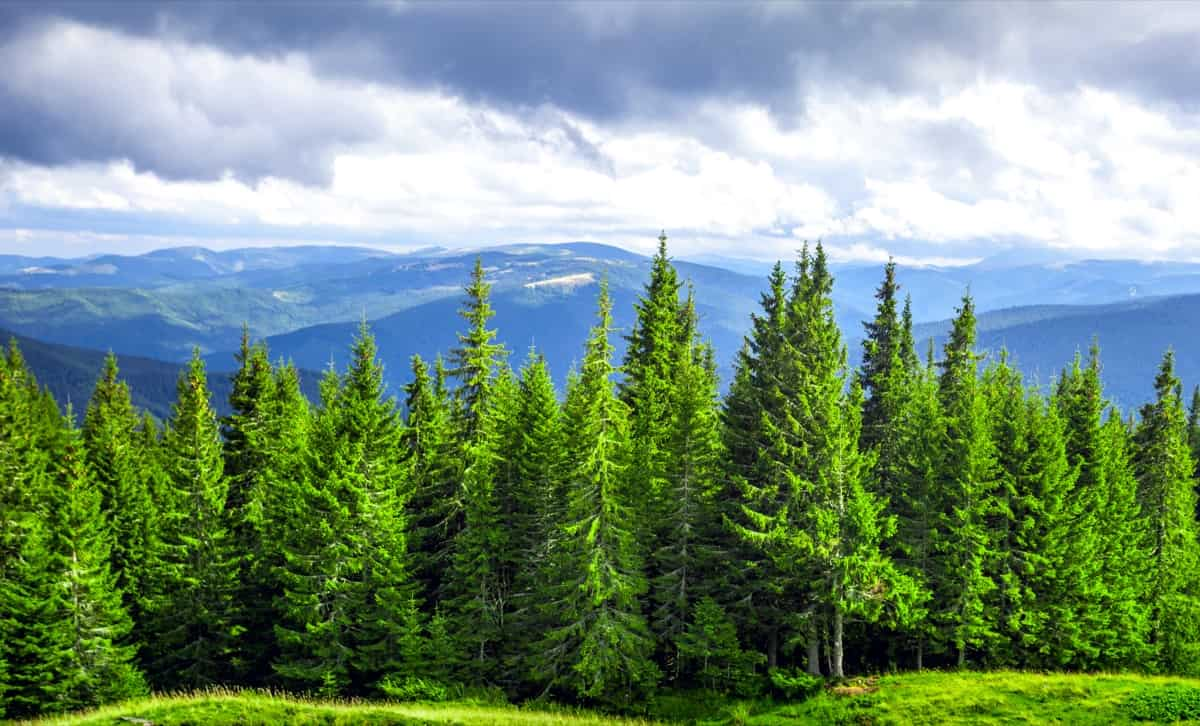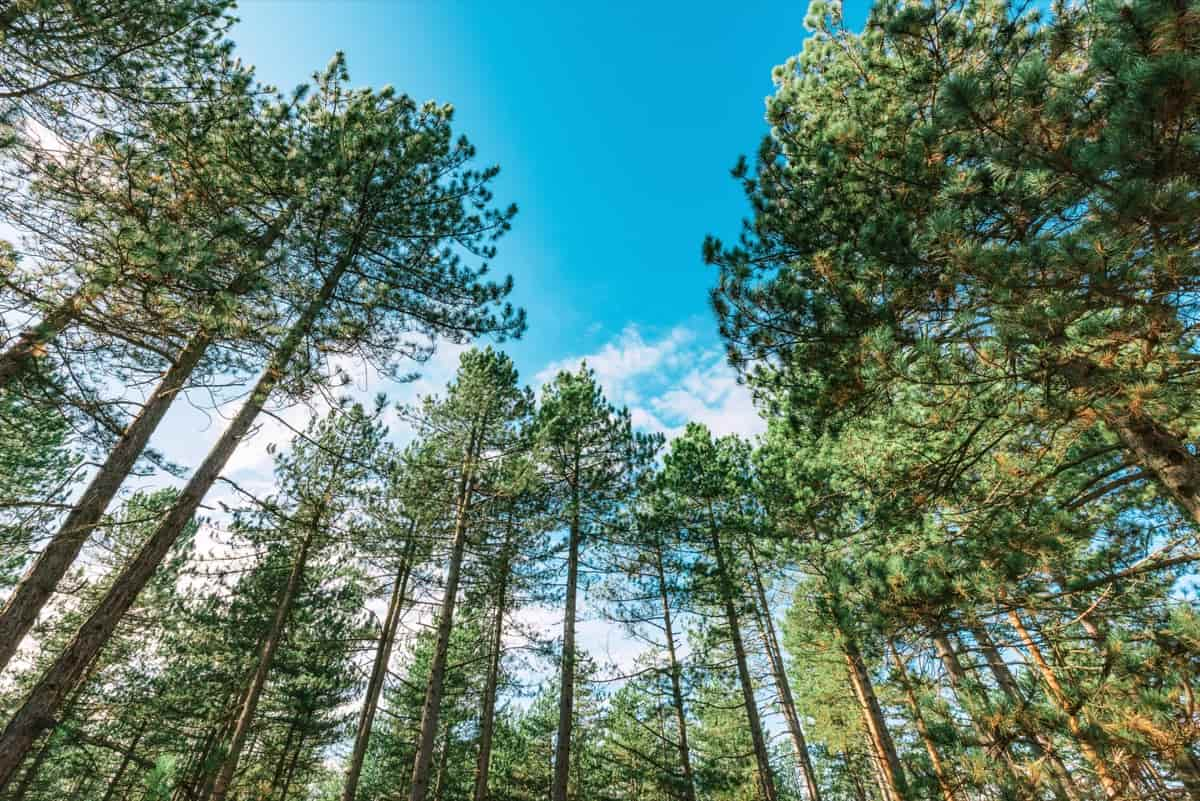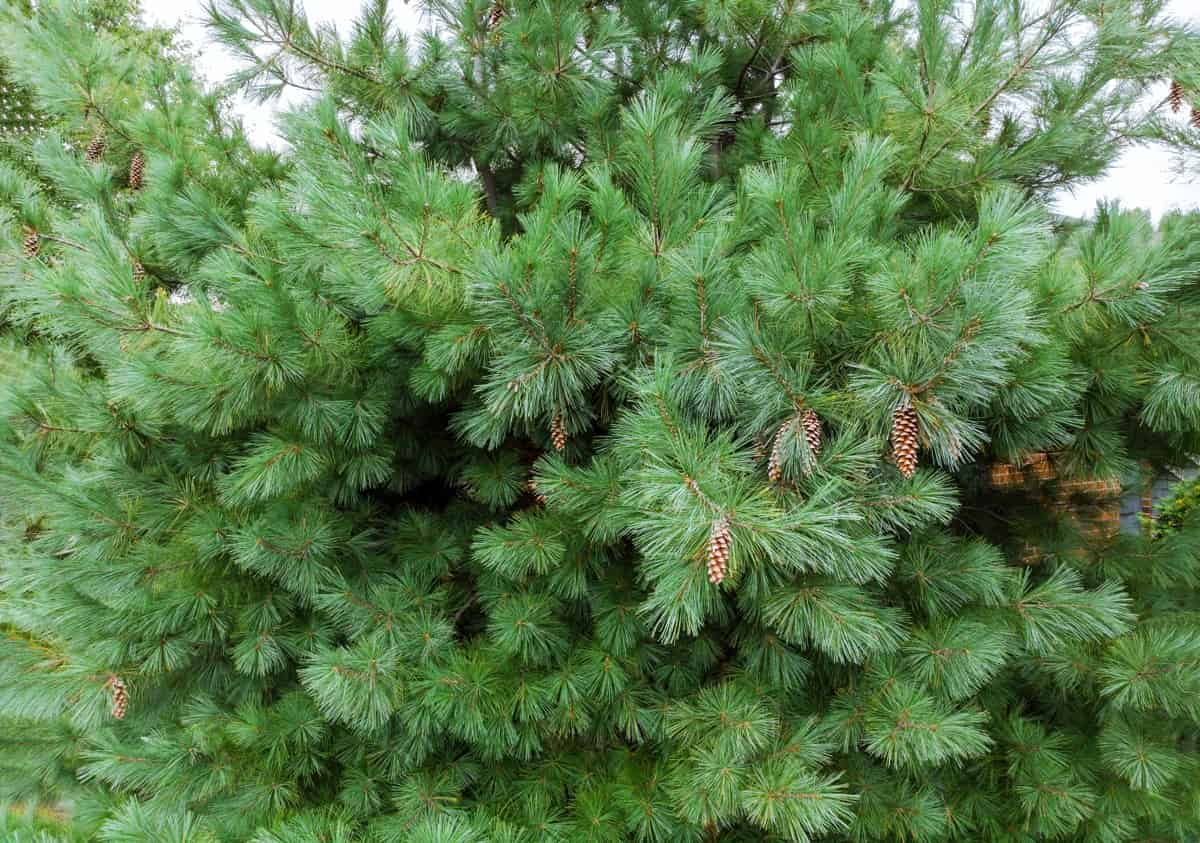A fascinating process unfolds in the enchanting realm of forests—pine tree pollination. Embarking through nature’s intricate design, we delve into the captivating world of pine tree reproduction cycles. These majestic conifers, known for their towering stature, follow a carefully orchestrated rhythm of life. Join us as we unravel the science behind their reproduction, exploring the interplay of pollen, cones, and the vital role natural elements play.

Introduction to Pine Tree Pollination: Understanding the Basics
Pine trees, gymnosperms, can harbor both male and female reproductive structures within their majestic forms. They bear “naked seeds” sheltered within their cones, and their life cycle begins and concludes with a mature tree’s embrace. The strobilus, or pine cone, plays a pivotal role in this intricate narrative, hosting either male or female sexual organs.
As spring arrives, male strobulii release pollen, which metamorphoses into tubes and reaches the plant’s nucleus. Within the receptive female cones, a dance of megaspores and chromosomes unfolds, leading to the development of a megagametophyte, a vessel for nascent egg cells. Fertilization, the climax of this narrative, involves the fusion of egg cells and pollen tubes, birthing a zygote.
This zygote matures into a seed, with the journey continuing as it matures into a seed. Dissemination via wind or wildlife marks the beginning of this embryonic journey. Upon reaching the earth, these seeds embark on the arduous growth path, thriving in various terrains. Their towering presence, often reaching 150 feet, reflects the grandeur of nature’s orchestration.
Anatomy of Pine Trees: Reproductive Structures and Pollen Production
Pine trees, a symbol of the plant world, have a unique duality in their forms. They have male reproductive structures, known as strobulli or pine cones, located in the lower branches, while female structures grace the upper branches, creating a symphony of life’s dance. Pollen production, a cornerstone of the pine tree’s reproductive cycle, transpires within the male strobulli, where microsporocytes evolve into pollen grains.
As spring approaches, these grains burst forth into the air. Meanwhile, the female strobulli await life-bearing pollen, which forms tubes within the female reproductive structure. Megaspores and chromosomes mingle within this sanctum, creating the foundation for future life. One chosen megaspore thrives, evolving into a megagametophyte, the cradle for nascent egg cells.
In case you missed it: Growing Chicago Hardy Fig: Planting, Pollination, Winterizing, and Care

The climax of fertilization sees egg cells embrace pollen tubes, forming a zygote that matures into a seed. Once planted, these seeds spring to life, reaching upward toward the sun’s embrace. Pine trees thrive in diverse terrains, reminding us of the intricate dance of life, encompassing genders uniting, pollen tubes weaving, and seeds germinating in harmony with the natural world.
The Role of Wind in Pine Tree Pollination: Anemophilous Reproduction
Pine trees, a majestic species, use a unique pollination process with the wind. Male reproductive structures within pine cones release pollen grains into the air, the wind to carry them across vast distances in search of female counterparts. Some pollen grains alight on receptive female cones, where they metamorphose into pollen tubes, which travel toward the female reproductive core. Within this hidden haven, a single megaspore blossoms into a megagametophyte, nurturing the growth of vital egg cells.
Fertilization marks the end of this symphony, as pollen tubes infuse egg cells with life, resulting in a zygote that matures into a seed. The wind then disperses these seeds across the earth, resuming the cycle. This anemophilous pollination reveals a tale of collaboration with the wind, where genders unite, pollen grains soar, and seeds embark on a new journey.
Factors Affecting Pine Tree Pollination: Temperature, Humidity, and Wind Speed
Pine tree pollination involves three key factors: temperature, humidity, and wind speed. Temperature influences pollen release timing and female cone openness, while humidity prevents desiccation and ensures pollen’s viability. Wind speed aids pollen migration to receptive cones, with gentle breezes ensuring controlled travel without overpowering the grains. These elements work together to create a harmonious balance, ensuring pollen and cones unite and perpetuate the cycle of life with finesse and precision.
Pollen Dispersal Mechanisms in Pine Trees: How Does Pollen Travel?
Male pine cones release pollen grains carried by gentle breezes across landscapes. These grains, like explorers, seek receptive female cones, akin to travelers on a grand adventure. Some alight upon the waiting cones, while others continue their journey until they reach their destination. However, insects and animals, drawn by nature’s allure, sometimes join in, transporting pollen from one cone to another, unknowingly aiding reproduction.
The Process of Pollination in Pine Trees: From Pollen Release to Fertilization
Pine tree pollination unfolds like a delicate symphony of life. As gymnosperms, they bear “naked seeds,” distinct from enclosed ovaries. Most pine trees are monoecious, featuring male and female flowers on the same tree. Male flowers produce pollen, carried by the wind, to female flowers, which develop megaspores. This pollen carries the potential for fertilization. Male cones on lower branches release pollen grains carried by the wind.
In case you missed it: Avocado Tree Propagation and Pollination: Methods and Strategies

Upon reaching female flowers, pollen enters through soft scales. The journey continues as pollen tubes develop and pollen transforms into fertilization-capable sperm cells. Fertilization occurs after a delay, with female flowers closing as cones begin to form. Over time, cones mature, containing seeds for the next generation. Wind disperses most seeds, while birds spread others.
The Importance of Pollinators in Pine Tree Reproduction: Insects and Birds
Pollinators, such as insects and birds, play a pivotal role in pine tree reproduction. While wind is a primary pollen carrier, these creatures aid cross-pollination by transferring pollen between male and female flowers. This dynamic partnership enhances genetic diversity and ensures the vitality of pine tree populations, highlighting the critical interdependence of nature.
Self-pollination Vs. Cross-pollination in Pine Trees: Pros and Cons
Self-pollination, where pollen from the same tree fertilizes its flowers, ensures reproductive success but limits genetic diversity. Cross-pollination, facilitated by wind and pollinators, promotes genetic variability, enhancing adaptability to changing environments. However, cross-pollination demands external agents for transfer, making it reliant on their availability. Ultimately, a balance between both methods maintains a blend of genetic stability and innovation, essential for the resilience and evolution of pine tree populations in response to the challenges of nature.
Environmental Impacts on Pine Tree Pollination: Climate Change and Pollution
Pine tree pollination faces significant challenges from environmental factors like climate change and pollution. Altered weather conditions due to climate change can disrupt the synchrony between pollen release and female cone development. Increased pollution can harm pollinators crucial for cross-pollination, affecting successful reproduction. These stressors jeopardize the delicate balance of pine tree ecosystems.
Human Intervention in Pine Tree Pollination: Artificial Pollination Techniques
Human intervention in pine tree pollination involves artificial techniques to enhance reproduction. Pollen collection from male cones is followed by controlled application onto receptive female cones. This method ensures efficient fertilization and seed production. It’s useful for maintaining genetic diversity, preserving rare species, and supporting reforestation efforts. Human-guided pollination serves as a strategic tool to counter environmental challenges and promote the vitality of pine tree populations.
In case you missed it: How to Pollinate Hibiscus Flowers: Techniques for Hand and Natural Pollination

Conclusion
Pine tree pollination, nature orchestrates a symphony of wind, pollen, and life. From male cones releasing pollen to female cones cradling seeds, this timeless cycle unveils the resilience of these giants.
- Feed Your Flock for Less: Top 10 Tips to Save on Chicken Feed
- Ultimate Guide to Ossabaw Island Hog: Breeding, Raising, Diet, and Care
- Hatching Answers: The Top 10 Reasons Your Chickens Aren’t Laying Eggs
- Eggs and Economics: Breaking Down the Cost of Raising Backyard Chickens
- Defend Your Greens: Proven Methods to Keep Iguanas Out of Your Garden
- Ultimate Guide to Cinnamon Queen Chicken: A Comprehensive Guide for Beginners
- Ultimate Guide to California Tan Chicken: Breeding, Raising, Diet, Egg-Production and Care
- Ultimate Guide to Marsh Daisy Chicken: Breeding, Raising, Diet, and Care
- 10 Types of Chicken Farming Businesses You Can Start for Profits